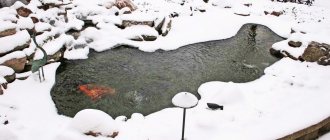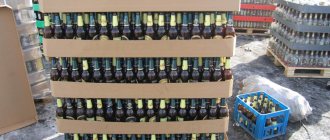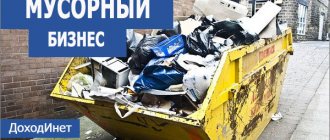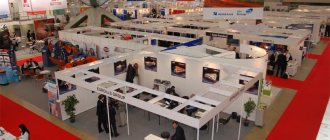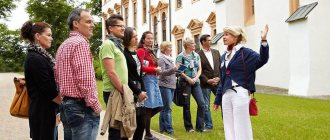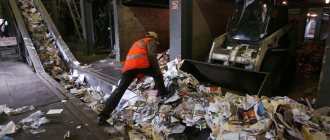According to some data, the average Russian consumes about 30 kg of fish per year, although in terms of this indicator we are still far behind European countries. Experts note this market as dynamically developing and, despite economic and financial problems within the country, the volume of fish consumption is not decreasing. Undoubtedly, a fish processing business, if properly organized, cannot be unprofitable. The main task of an entrepreneur is to competently build a chain of supply, processing and shipment of fish.
Calculation of business payback period
One of the profitable trends in fish processing is smoking and drying. After processing, the product increases in price by up to 200%, and allows even those enterprises that are located far from the fishing grounds to earn money.
Those types of fish that have thick scales are ideal for smoking. During the smoking process, the skin of such fish does not crack, which preserves the presentation of the delicacy. These are such well-known fish species as sea and river perch, pike perch, mackerel, carp, and bream. Herring (an inexpensive and common fish), as well as pike, flounder and autumn greenling, are also often smoked.
The most common technologies are hot and cold smoking. Cold smoking is carried out at temperatures below 30 degrees, and hot smoking - in the range of 100 - 120 degrees. Unlike cold smoking, during hot smoking the product is completely steamed, all possible bacteria are killed in it, so this product is ready for use without pre-treatment. There are other technologies for smoking fish, such as semi-hot, smokeless and electric smoking. But such methods have not received wide industrial distribution, since the product either has a short shelf life or has poor taste.
Room
Some difficulties may arise with the selection of premises for organizing a smoking workshop. The fact is that such objects are subject to fairly stringent requirements from Rospotrebnadzor (SES). Thus, the distance of the fish processing workshop from the nearest residential buildings must be at least 300 m. The premises itself must be connected to all communications (electricity, hot and cold water, sewerage and ventilation system). Also, in the production department, bactericidal lamps and smoke traps should be installed, and the wall should be tiled to a height of up to 1.5 meters.
As you understand, it is very difficult to find a ready-made premises that meets these requirements. An ideal option would be the premises of a former municipal canteen, since such facilities were built in accordance with all SES standards. Otherwise, the cost of refurbishing the premises could amount to tens of thousands of dollars. To organize a workshop you will need an area of 50 to 200 square meters. m. The monthly rent will be from 40 to 80 thousand rubles, depending on the condition of the premises.
Another option can be used as a premises: a mobile fish workshop “KOLAKS” (company of the same name). The workshops are supplied in different configurations: for processing 200, 500 and 1000 kg of fish per shift. Such a workshop is equipped with everything necessary for the initial and subsequent processing of fish (salting, drying, drying, smoking). The workshop meets all the requirements of Rospotrebnadzor, fire and electrical safety standards and is accompanied by relevant documentation. Kolaks costs from 1.0 million rubles (at the lowest production capacity). Essentially, you purchase a ready-made turnkey workshop and all you have to do is find suppliers of raw materials (fish) and hire workers:
Fish farming technology
Before drawing up a detailed business plan for trout or carp farming, you need to decide several important questions for yourself:
- What will the fry be raised in? Most new fish farmers consider renting a pond, but containers or cages can serve as an alternative.
- How will the nutrition of the grown-up individuals be organized? Is intense feeding expected to continue, or is the fish released into the reservoir where it gets food on its own?
- What type of food is needed on the farm - plant food or live food.
- What measures need to be taken to prevent death in winter.
- Will antibiotics and other medications be used, and if so, which ones?
Artificial breeding
Feeding the fish
For breeding, 3 systems are used:
- Intensive involves feeding with compound feeds with a high protein content (up to 40%). Since in this case the population of the reservoir is quite dense, an additional supply of oxygen is required (aeration or increased water flow). This method makes it possible to significantly increase productivity by using the available reservoir to the maximum. Among the disadvantages of this method is the high risk of spreading diseases.
- Semi-intensive is based on feeding natural protein feeds, and carbohydrates are used as additives. The disadvantage is the weak growth of natural protein feeds in late spring - early summer.
- The extensive system is based on the natural nutrition of fish with natural feed. The costs in this case are minimal, but the weight gain is significantly lower than with the other two systems.
Depending on the body of water, there are several methods of growing fish:
- pond;
- cage;
- RAS (recirculated water supply installations).
Depending on the cyclicity, pond farms are:
- Full system. Full cycle from fry to adult fish.
- Fish hatchery. Fry, larvae and fingerlings are raised.
- Feeding. For the growth of adults.
The cage method involves growing fish not in reservoirs, but in cages - fenced areas. The advantages of doing it this way are obvious: a small place with the ability to use the rest of the reservoir.
Closed water supply installations
RAS
The use of RAS is most promising for private fish farming. In this case, the influence of negative natural factors is minimized, since feeding and control of technological parameters of keeping are automated and clearly controlled.
To keep the fish, the optimal water temperature is set and maintained, which makes it possible to reduce the period of growing marketable fish. Most often, installations are installed indoors.
The size and shape of the RAS module depends on the fish species chosen for breeding. To grow carp and trout, you need deep (more than 1.5 m) square pools with a conical bottom. The pool is filled before the fish are released and refilled with fresh water daily (up to 10%), which significantly reduces the overall water consumption. The water must be artesian - this eliminates the possibility of infection. The water at the inlet must be supersaturated with oxygen, the supply pipe must be buried so that the stream runs along the side.
Water circulation in the installation is carried out using sediment. Two mechanical filters provide cleaning: 1 retains physiological waste, 2 - biological film that occurs during biological treatment.
The settings allow you to adjust water temperatures (heating or cooling).
The population density largely depends on the type of fish; for trout, a density of up to 100 kg/m is permissible, and for carp - twice as much.
Nutrition is provided only through feeding.
Business registration
To get started, you will need to register your business. A small workshop can be registered as an individual entrepreneurship. The costs of opening an individual entrepreneur are minimal (only 800 rubles in state duty), and this process takes only 5-7 days. The most suitable taxation system is simplified (STS).
This activity is not subject to licensing, and certification is voluntary. But it is necessary to have accompanying documentation and a veterinary opinion. doctor for each batch of fish. Also, such workshops are constantly monitored by the SES (sampling fish, checking compliance with sanitary requirements).
Workshop organization
Having decided to organize fish processing production, you should take into account some of its features. Initially, it is necessary to create a small company that will produce the most popular products.
For example, you can salt and smoke various types of fish and seafood. To do this, you will have to process fresh or fresh-frozen fish and then sell it through retail outlets. This type of business is highly profitable and pays off in about six months. In accordance with production volumes, the size of the minimum capital investment can be 0.5–1.5 million rubles. It should be taken into account that it is better to open a fish processing company to people who have experience in the food industry. It is noteworthy that even the simple sale of finished products is a very profitable business. It can be produced at existing retail outlets, as well as in special pavilions opened during production. Processing fish and seafood is considered one of the most promising and profitable types of business. Initially, you should choose a room suitable for its location. Fish processing workshops must meet all stated requirements regarding working with food products. The main point is obtaining documents confirming permission to work in the food industry. Particular attention should be paid to the selection of labor, because both office workers and blue-collar specialists will be required. In addition, high-quality technical equipment is also a priority, which can increase labor productivity and reduce the cost of finished products.
Any business has its own nuances and characteristic features. High income always entails some financial losses and problems. However, in a short period of time they will completely pay for themselves.
Staff
Among the personnel, first of all, a competent technologist is needed. A lot depends on his work. First of all, the technologist will develop a recipe for smoking and drying, control the production process and the quality of the resulting product. The work of a technologist is highly paid and costs 20 - 30 thousand rubles per month. In addition to the technologist, you will need to hire smoking shop workers, general workers, a driver, a sales manager, and an administrator. An accountant and a cleaner can be outsourced.
Economic part of the fish processing business plan
Operating expenses
Operating expenses are inherent in any business activity, since they ensure the execution of all stages and phases of commercial and technological activities. When designing an enterprise within the framework of a fish processing business plan , you must take a good approach to planning expenses, imagine their volume and structure.
Operating expenses structure:
- rental of premises for locating an enterprise - XXX rubles;
- utilities and payments – XXX rub.;
- current repairs and modernization of used equipment – XXX rub.;
- purchase of raw materials from manufacturers – XXX rub.;
- wages and deductions from it – XXX rub.;
- payment of taxes and other government fees - XXX rub.;
- other operating expenses - XXX rub.
The total amount of operating expenses to support current activities is equal to XXX rubles. per month
Income from product sales in a fish processing business plan
To ensure the necessary profitability, it is necessary to determine the factors that generate demand and evaluate the contribution of each product to the overall sales structure, since the amount of profit it brings depends on the cost of the product.
When drawing up a business plan for fish processing, product characteristics are important:
- wide product range;
- naturalness of the composition;
- Availability in all retail chains;
- reasonable pricing policy;
- quality of merchandising, design and display of retail shelves.
General sales structure:
- Canned fish – XXX rub.
- Minced meat – XXX rub.
- Smoked fish – XXX rub.;
- Salted fish – XXX rub.
The planned amount of income from sales is XXX rub.
Employees and their motivation
The main person at such enterprises will be the technologist, since the taste of the future product depends on a well-chosen recipe. However, it is not enough to develop a recipe - it is necessary to carry out all technological cycles efficiently and sell the finished product.
Therefore, when developing this range of issues in a fish processing business plan , you need to understand the number and qualifications of the staff, as well as calculate the total cost of paying wages:
- enterprise manager - XXX rub.;
- chief technologist - XXX rub.;
- HR department - XXX rub.;
- accounting - XXX rub.;
- advertising and sales department – XXX rub.;
- shop foreman in areas - XXX rub.;
- workers - XXX rub.;
- cleaners and drivers – XXX rub.
Sales of products
It is worth considering the fact that organizing production is only half the battle. Due to increasing competition in the market, establishing distribution channels for products is becoming increasingly important. Smoked fish is a perishable product, so it requires immediate delivery to the point of sale to the end consumer. The slightest violation of deadlines - and the product will be spoiled, and the enterprise will suffer losses. Therefore, before starting a business, it is important to work out all possible options for selling the product:
- wholesale resellers;
- Retail Stores;
- food markets;
- specialized fish stalls;
- fishmongers;
- cafes and restaurants.
How to open a fish drying shop
“Informed means armed,” this phrase is perfect for this business area. Before entering this niche, you should analyze the market very carefully. It is best to use professional marketing research, which will reveal the real picture of what is happening in the fishing industry market. On the website https://tebiz.ru/fishseafood.php you can purchase a catalog with market research of the desired segment, and approach opening your business fully armed. Any production needs a suitable premises; for a fish drying workshop it must have the following parameters:
- the distance from residential facilities and non-food industry enterprises is at least 300 meters;
- the area of the room must be at least 100 m²;
- equipment with basic engineering systems (water supply, sewerage, heating, ventilation).
The requirements for premises are extremely high, such as the food industry. At the initial stage, it is better to find a premises where there was already a food processing plant - such a premises, in any case, passed the necessary checks. An example of a fish drying production workshop plan
To open a fish drying shop, you will need permission from the following organizations:
- Rostechnadzor;
- Fire Safety Service;
- Rosprirodnadzor;
- Veterinary service.
The list of required documents can be specified at the location of the potential enterprise.
How does the Cold-Heat equipment work?
Our equipment is installed externally and connected to the fish drying chamber using conventional air ducts. The air inside the drying chamber is in no way connected with the outside and the level of humidity and temperature is maintained by the unit and is constantly at the level required by the technologist.
Our fish drying technology involves the use of potential energy (energy of the water-moist steam phase transition) contained within the warm wet steam generated as a result of the evaporation of moisture from the surface of the product, inside the fish drying dryer. The Cold-Heat installation condenses the moist steam entering through the air duct, releasing energy. The water flows into the pan, and the resulting kilowatts are converted inside the device and used for drying fish.
The process itself and the conditions inside the fish drying chamber are controlled using the operator panel. All functions are understandable on an intuitive level; no special skills are required other than direct knowledge of fish drying technology. By setting the required parameters, the specialist controls the environment inside. There is no need to measure humidity and temperature manually; all indicators on the control panel of fish drying equipment are always before your eyes.
